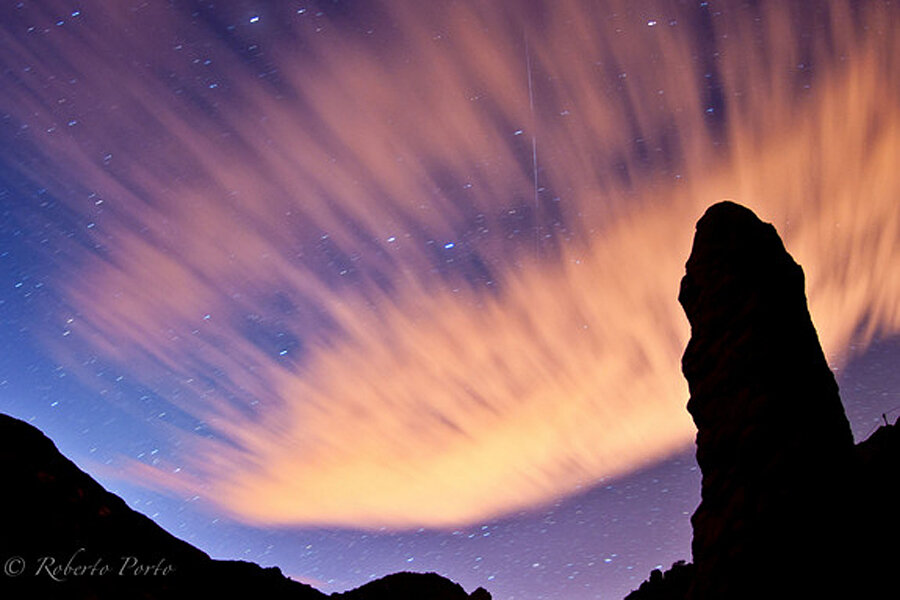Meteor shower, first of 2014, peaks on Friday
Loading...
Early each January, the Quadrantid meteor shower provides one of the most intense annual celestial fireworks displays, with a brief, sharp peak lasting only a few hours. That peak occurs Friday (Jan. 3), but this year the sun will spoil the show for stargazers in North America.
The 2014 Quadrantid meteor shower will peak Friday at 3 p.m. EST (2000 GMT), in the middle of the day for most of North America, so the best meteor views will be in other parts of the world, where night has already fallen.
At its best, the Quadrantids can dazzle observers with between 60 and 120 meteors an hour. But because the peak time Friday falls in the middle of the day, U.S. observers can likely only hope to see a fraction of that peak rate before sunrise and after sunset on Friday. [Photos: Amazing Quadrantid Meteor Shower Views by Stargazers]
When and where to look
In 2014, a strong display of Quadrantid meteors is likely for central and eastern Asia, including Japan.
As mentioned above, peak activity is expected at 3 p.m. EST (2000 GMT) Friday evening, when the radiant of this shower is ascending the dark northeastern sky. It will be early Saturday morning local time across Asia during the best viewing time, and with no moonlight to interfere this might turn out to be one of the best meteor displays of the year. Morning twilight will not interfere until about 6 a.m. local time.
But what does that mean for those of us here in North America?
Since it will be Friday afternoon along the East Coast and noon on the West Coast, observers will have to rise before dawn or wait until after sunset, local time. Both options mean observers will see fewer meteors in the night sky because of the peak period's unfortunate timing this year.
If you venture out to look before sunrise on Friday morning, the meteor shower radiant will be well up in the northeast sky, but it will many hours before the actual peak. You might catch sight of perhaps 10 to 20 "Quads" during an hour's watch.
There will likely be even fewer meteors that might be seen early on Friday evening, but these "might" turn out to be spectacular "earthgrazers" — meteors that skim across our upper atmosphere on long, majestic paths. The emanation point of the Quadrantids at that time will be low in the northwest sky.
If you do head out to look for meteors, remember to bundle up! Just as with the Geminid meteor shower in December, observers should remember to wear warm clothing, make sure they are away from city lights (which can interfere with any meteor shower displays) and settle in to a reclining chair for a more comfortable viewing experience.
Editor's note: If you snap an amazing photo of the Quadrantid meteor shower and you'd like to share it for a possible story or image gallery, please send images, comments and any other observing details to managing editor Tariq Malik at spacephotos@space.com.
Crumbs of a dead comet?
Because the influx of Quadrantid meteors is sharply peaked, with the bluish "shooting star" streaks occurring at only half their maximum rate six hours before and after peak time, the stream of particles is a narrow one — possibly derived relatively recently from a small comet.
In fact, in 2003, astronomer Peter Jenniskens of NASA, found a near-Earth asteroid (2003 EH1) that seemed like it wasin the right orbit to make the Quadrantids. Some astronomers think that this asteroid is really a piece of an old, "extinct" comet; perhaps a comet that was recorded by Chinese, Korean, and Japanese observers during the years 1490-91. Maybe that comet broke apart, and some of the pieces became the meteoroids that make up the Quadrantids.
The Quadrantid meteor shower radiates from the northeast corner of the constellation of Bootes, the Herdsman, so we might expect them to be called the "Bootids." But back in the late 18th century, there was another constellation in the same spot dubbed the Quadrans Muralis, the "Mural or Wall Quadrant" (an astronomical instrument)
Quadrans Muralis is long-obsolete star pattern, invented in 1795 by J.J. Lalande to commemorate the instrument used to observe the stars in his catalogue. Adolphe Quetelet of Brussels Observatory discovered the shower in the 1830’s, and shortly afterward it was noted by several astronomers in Europe and America. Thus they were christened "Quadrantids" and even though the constellation from which these meteors appear to radiate no longer exists, the shower's original moniker continues to this day.
Joe Rao serves as an instructor and guest lecturer at New York's Hayden Planetarium. He writes about astronomy for Natural History magazine, the Farmer's Almanac and other publications, and he is also an on-camera meteorologist for News 12 Westchester, N.Y. Follow us @Spacedotcom, Facebook or Google+. Originally published on SPACE.com.
- Meteor Shower Quiz: How Well Do You Know 'Shooting Stars'?
- Fireballs In Arkansas Sky - Quadrantid Meteors Caught on Video
- How Meteor Showers Work (Infographic)
Copyright 2014 SPACE.com, a TechMediaNetwork company. All rights reserved. This material may not be published, broadcast, rewritten or redistributed.







